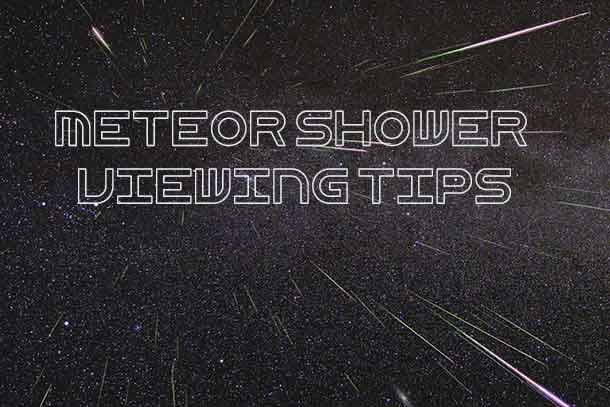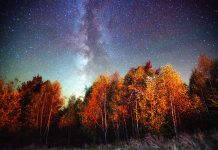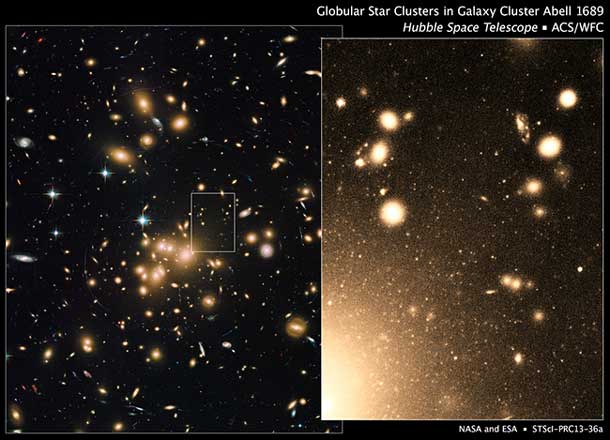THUNDER BAY – TECH – Make plans now to stay up late or set the alarm early next week to see a cosmic display of “shooting stars” light up the night sky. Known for it’s fast and bright meteors, the annual Perseid meteor shower is anticipated to be one of the best potential meteor viewing opportunities this year. “Forecasters are predicting a Perseid outburst this year with double normal rates on the night of Aug. 11-12,” said Bill Cooke with NASA’s Meteoroid Environments Office in Huntsville, Alabama. “Under perfect conditions, rates could soar to 200 meteors per hour.”
An outburst is a meteor shower with more meteors than usual. The last Perseid outburst occurred in 2009.
Weather for Thunder Bay – Outlook Less than Optimal
The forecast for Thunder Bay is for cloudy conditions with a 70 percent chance of showers for August 11th and cloudy with 40 percent chance of showers for August 12th. That may mean the best opportunities for watching will be online on NASA TV.
The Perseids show up every year in August when Earth ventures through trails of debris left behind by an ancient comet. This year, Earth may be in for a closer encounter than usual with the comet trails that result in meteor shower, setting the stage for a spectacular display.
Every Perseid meteor is a tiny piece of the comet Swift-Tuttle, which orbits the sun every 133 years. Each swing through the inner solar system can leave trillions of small particles in its wake. When Earth crosses paths with Swift-Tuttle’s debris, specks of comet-stuff hit Earth’s atmosphere and disintegrate in flashes of light. These meteors are called Perseids because they seem to fly out of the constellation Perseus.
Most years, Earth might graze the edge of Swift-Tuttle’s debris stream, where there’s less activity. Occasionally, though, Jupiter’s gravity tugs the huge network of dust trails closer, and Earth plows through closer to the middle, where there’s more material.
This may be one of those years. Experts at NASA and elsewhere agree that three or more streams are on a collision course with Earth.
“Here’s something to think about. The meteors you’ll see this year are from comet flybys that occurred hundreds if not thousands of years ago,” said Cooke. “And they’ve traveled billions of miles before their kamikaze run into Earth’s atmosphere.”
How to Watch the Perseids
The best way to see the Perseids is to go outside between midnight and dawn on the morning of Aug. 12. Allow about 45 minutes for your eyes to adjust to the dark. Lie on your back and look straight up. Increased activity may also be seen on Aug. 12-13.
For stargazers experiencing cloudy or light-polluted skies, a live broadcast of the Perseid meteor shower will be available via Ustream overnight on Aug. 11-12 and Aug. 12-13, beginning at 10 p.m. EDT.
More about the Perseids
Perseid meteors travel at the blistering speed of 132,000 miles per hour (59 kilometers per second). That’s 500 times faster than the fastest car in the world. At that speed, even a smidgen of dust makes a vivid streak of light when it collides with Earth’s atmosphere. Peak temperatures can reach anywhere from 3,000 to 10,000 degrees Fahrenheit as they speed across the sky.
The Perseids pose no danger to Earth. Most burn up 50 miles above our planet. But an outburst could mean trouble for spacecraft.
About the Meteoroid Environment Office
It’s Cooke’s job to help NASA understand and prepare for risks posed by meteoroids. He leads a team of meteor experts in the Meteoroid Environments Office at NASA’s Marshall Space Flight Center. They study meteoroids in space so that NASA can protect our nation’s satellites, spacecraft and even astronauts aboard the International Space Station from these bits of tiny space debris.
Files: NASA



